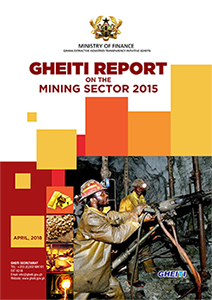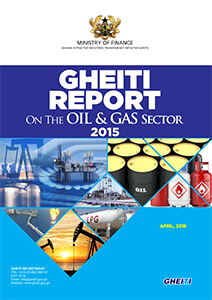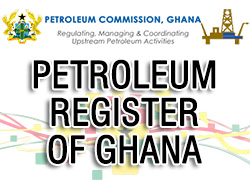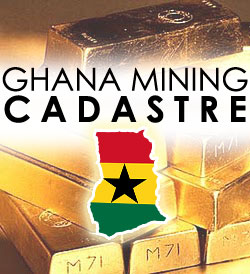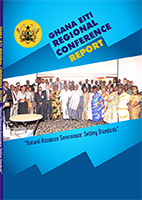| Advancing EITI Mining and Sub-National Issues |
 |
 |
 |
|
By Amponsah Tawiah - EITI Steering Committee, Ghana The basic concept of EITI is for the extractive industries making payments, Government receiving revenues and for Civil Society playing a watchdog role to ensure sanity in revenue - flow streams. The concept appears simplistic but carries a lot of ramifications. Transparence is human endeavour tool that helps to bring accountability, equitable distribution, openness and peace.
Article 257 (6) of the Constitution of Ghana vests all minerals in their natural state in the President, to hold in trust on behalf of the people of Ghana. This clearly means that every Ghanaian has equal stake in our mineral wealth and must derived such benefits as such. Some communities however must necessarily benefit slightly higher than others though unbiased as a result of the fact that they needed to incur extra inconveniences as a result of the mineral exploitation by mining companies. Ghana has a peculiar situation in so far as her mineral wealth is concerned. Whilst all minerals are vested in the state, the lands in which the minerals are found belong to Traditional Authorities and others. Therefore exploitation of the minerals must necessarily take place with their consent as prime stakeholders. In 1992 Government conceptualized the idea of compensating the disadvantaged communities with the creation of the Mineral Development Fund to recycle portions of royalties paid by Mining Companies to the impacted communities. Under the process, the District Assemblies were allocated 4.95% of the total royalties by mining companies within each District, whilst the Traditional Authorities got 1.8% and the Stool Landowners were allocated 2.25%. In percentage terms, the figures appear so meager but in quantum terms could be big in certain communities. This became operational in 1994 and the scheme has been commended by Civil Society Organisations (CSOs) and International Social Commentators. However this was not opened to the public and the mining communities at large and was therefore shrouded in secrecy and known only to the top hierarchy of the various District assemblies and the Traditional Rulers who are also beneficiaries by virtue of the fact that they are the custodians of the lands on which mining activities are undertaken. The non-transparent handling of this portion of royalties was a recipe for confrontation at the local levels because the communities accused both the government and companies of plundering the wealth without any direct benefit to them. When the mineral development fund allocated to the District Assemblies were shrouded in secrecy in the pre-EITI era, it gave room for abuse by the District Authorities such that the usage of the monies were not targeted at development projects and at best be spent on recurrent expenditures. The monies therefore did not have any developmental impact on the communities that have suffered from the shock of blasting and other forms of pollution With the introduction of EITI in the country and most especially at the District level, the citizenry particularly at the mining communities are well-informed about the operations of mining companies since there is openness among the three-pillars at the communities namely, the mining companies, the communities backed by the civil society organizations and the District Assemblies. There is dialoguing among these pillars which has resulted in reduced tensions in mining communities because now leadership of various mining communities are able to abstract accurate information from mining companies comfortably about how much they paid to the central government and how much is due them in advance before the release from the central government. In order to make EITI workable and appreciated at the District level and be used as an effective tool, stakeholder involvement is very paramount. Educational programmes tailored to the understanding as well as actual involvement is pertinent for all to own the process. Ghana approached the process by designing programmes to involve all Heads of District Institutions, the Traditional Authorities, Civil Society Organisations, other government officials and the Parliamentary sub-committee responsible for mining through workshops and seminars. Hither to the introduction of EITI, mining communities were under the pretext of exacting their pound of fresh, made complains either genuinely or otherwise about spillage of cyanide solution and other toxic chemicals into their sources of drinking water and blasting to destroy their abodes. With EITI, such issues even if they happen are dialogued upon and the way forward is quickly mapped to the acceptance of all. The Civil Society Organisations have done commendable jobs in these areas and have championed the interest of the communities, but instead of mining companies seeing the CSOs as enemies rather see them as partners in development and factor them into their day-to-day interactions with the communities. CSOs have also reciprocated very well by shifting the post from being totally advocacy groups to one of active engagement in the initiative. As a result of opening up for engagement process, CSOs are gradually being looked upon as umpires in compensation package negotiations between mining companies and mining communities. As part of the processes to advance EITI at the District level, virtually all the mining companies in the country have established Trust Funds in which they contribute $1 for every ounce of gold they produced in addition to 0.5% of their pre-tax profit. Mining companies however, do not dictate the kind of projects to be funded. The community leaders together with the assemblies and mining companies agree on projects to be funded. EITI in Ghana and particularly at the District level has actually extended beyond the original concept. It has introduced transparency in various areas of endeavours and the mining companies have become very proactive in communicating to the communities especially about the situation on the ground. It would have been unheard off for a company to quickly alert a community that some dangers have been created, but would have tried quietly to solve it. Now any such situations are quickly brought into the public domain while efforts are made to ameliorate them. This thus puts the community into a secured position from the dangers of the operations. The next stage in entrenching the EITI processes at the District levels is the establishment of District information centres and also to strengthen our communication tools through the development of communication strategy for information dissemination. |



